Landmark new paper says that a sustainable marine aquarium trade may be a key to the future of healthy coral reef areas
By Ret Talbot
The fate of coral reefs worldwide is now a well-publicized, front-page, six o’clock news crisis. In fact, three marine scientists just published a landmark paper that leads with this daunting proclamation: “Coral reefs are at the brink of a global, system-wide collapse.”

Lead author of the paper, Dr. Andrew L. Rhyne: “Ending cyanide fishing and effective trade monitoring are necessary and critical short-term gains for the marine aquarium trade.”
Ending cyanide fishing and effective trade monitoring are necessary and critical short-term gains.
For those involved in the keeping of marine aquaria, it is logical—perhaps even imperative—to wonder whether or not embattled reef ecosystems can sustain fisheries pressure in addition to all the other stressors they face. Often the heated arguments come down to these two points of contention:
1. Is it possible to harvest live fishes and invertebrates from coral reefs in a sustainable manner?
2. If so, is it even desirable?
When fisheries pressure has a direct connection to a “luxury” pursuit, as is most often the case when it comes to supplying coral reef animals for shell collectors, jewelry and curio buyers, and marine aquarists, many people conclude there is little justification to harvest wild animals from reefs. Some environmental groups are, in fact, calling for bans on the harvest of reef fishes and invertebrates—bans that could be enforced by import restrictions imposed by importing countries, especially in North America and Europe. On the other end of the spectrum, some in the aquarium trade are saying that all aquarium animals should be captive bred.
“Reef-side” fishing communities are the key
Now, a new paper challenges that conclusion by suggesting not only are sustainable marine aquarium fisheries justifiable, they may in fact be able to play a leading role in coral reef conservation. Published in the April issue of the journal Current Opinion in Environmental Sustainability, the article is entitled, Is sustainable exploitation of coral reefs possible? A view from the standpoint of the marine aquarium trade.
The paper, authored by three scientists affiliated with the New England Aquarium, Drs. Andrew L. Rhyne, Michael F. Tlusty and Les Kaufman, is the latest in a series of scientific papers that are undoubtedly good news for those involved in the trade and keeping of coral reef animals. It argues strongly that the future of coral reefs are dependent on the “reef-side communities” that both derive their livelihoods from marine harvests and are involved daily in the protection of their local reefs.
With proper reforms and development, the authors say, the marine aquarium trade (MAT) can be a key player in defending reefs and reef resources from various serious onslaughts (destructive fishing practices, over-harvesting, pollution, shoreline deforestation, and other impacts).
“Rather than destroying the reef,” the authors say, “the marine aquarium trade could play a role in saving it, a role totally out of proportion to its size, and even out of proportion to its potential to do harm.”
Economic Incentives to Conserve
The notion that sustainable aquarium fisheries are possible and, in some cases, even preferable to no fishery at all is certainly welcome support news for those who have come to rely on wild fisheries, as the global marine aquarium trade does. It’s also good for fishers in coastal villages in source countries where aquarium fisheries can be viable paths to sustainable socio-economic growth.
While many conservationists may find it counter-intuitive, this paper is also good news for them, as even NGOs and others with longstanding anti-aquarium-trade agendas are coming to appreciate that real economic incentive to conserve has staying power that often trumps the grant-giving cycles and political whims on which many conservation initiatives depend.
“With judicious management, pertinent monitoring, well-placed testing, and cooperation by all members of the value chain,” conclude the authors of the paper, “the [marine aquarium trade] can be a positive conservation force, and a spark plug in the engine to save every [coral reef socio-ecological system].”
Good news indeed, although fully realizing it is going to take some work.
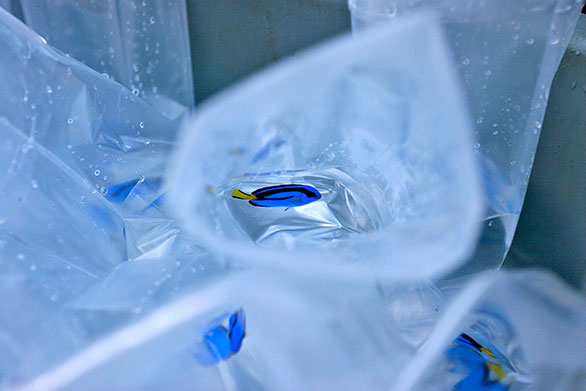
Pacific Blue Tang: a heavily targeted species in the Coral Triangle. Some biologists fear it is being overcollected in areas with no rules or regulations.
Challenges & Reforms
Ensuring that the marine aquarium trade is recognized as part of a broader solution to reef conservation will not be easy. Promoting sustainable socio-economic development for aquarium fishers and fisher communities in developing island nations will be an upstream swim against the status quo. Moving beyond the current dependence on cheap animals from aquarium fisheries about which there is the most concern insofar as sustainability is concerned will require a concerted multi-stakeholder approach. To achieve these ends, the authors suggest the trade will likely need to become more targeted and lower volume. It will also need to have less environmental impact and increased monitoring. The authors further contend market prices must increase owing to a price premium placed on higher value, sustainably-harvested animals, and effective trade associations or co-operatives in export countries will be necessary to help administer the redistribution of funds to fishers and fisher communities harvesting those aquarium animals. These are, no doubt, significant challenges. Put another way, adopting the tools outlined in the paper would be akin to comprehensive trade reform.
While some believe comprehensive trade reform is exactly what is needed, others argue the extent of reform imagined in the paper is heavy-handed given the trade’s impact relative to other extractive industries, not to mention ongoing improvements already undertaken within the aquarium trade. A smaller group within the aquarium industry simply believes comprehensive reform is at best unnecessary and at worst could spell the end of the trade and hobby. The paper’s lead author Dr. Andrew Rhyne of Roger Williams University and the John H. Prescott Marine Laboratory at Boston’s New England Aquarium disagrees, saying not doing anything is not an option.
“They are risking the future of their industry,” Rhyne says, and other industry observers concur. Maintaining the status quo is not an option given myriad factors ranging from the increasing attacks on the trade by anti-trade activists to the general “greening” of society. “People want to know where the things they purchase come from,” says James Lawrence, editor and publisher of CORAL Magazine, a periodical read by an international audience of amateur and professional marine aquarists, “and they want to feel good about the purchase whether it’s seafood, coffee or live fishes for their aquariums.”
Advocates of reform point out the aquarium trade does not exist in a vacuum. While a somewhat unique trade, it does not fall completely outside the paradigm of other extractive trades such as seafood and lumber. The challenges are momentous—and the proposed steps are many—but the fundamental shift toward a more sustainable trade does not require reinventing the wheel. Many resource extraction industries are already making significant progress on their respective journeys toward sustainability. As the paper makes clear, this is especially the case when those industries embrace economic development as a catalyst for natural resource protection.
Wake-up Call to Marine Aquarium Keepers
While the authors state the trade’s impact is small compared to “global processes that are enormously more threatening,” they also believe the time has come for the trade to renew its commitment to a sustainable future. Such a commitment can be viewed as part of a much larger movement aimed at more environmentally sustainable and equitable global trade across many industries, but it can also be viewed as something more. “The threat [the trade] poses is minor compared to other issues like climate change, overfishing and habitat destruction,” says Kaufman of Boston University, Conservation International and the New England Aquarium, “but the potential to engage it in positive ways, and the fact that some of us are ourselves major consumers, make it worthy of attention.”
“It is time,” the authors write, “for aquarium hobbyists, sport divers, fishermen, the marine aquarium trade, conservationists, and citizens of coral reef nations to look beyond their own shores and most immediate concerns, toward the relationship between their actions and a global future.”
Beyond the Law of Unintended Consequences
The move away from the developed world’s often knee-jerk response to environmental problems—to simply shut down fisheries and other extractive resource activities in developing countries when resource degradation is observed—is firmly rooted in the region’s interdependence between ecosystems and people. In places like the Coral Triangle, where the vast majority of marine aquarium animals originate, social, economic and ecological systems frequently meld as one. In this environment, what happens to the ecosystem—be it reef or rainforest—affects the people in a way that is difficult for those living in the developed world to fully comprehend.
Unlike the relatively temporary albeit savage tear of a hurricane or tornado through an American city, years of less dramatic overfishing or unsustainable logging in Solomon Islands can deal a blow to a village from which it may never recover. The blight of poverty on a coastal fishing village in Papua New Guinea can have deleterious consequences for reefs that, in the absence of economic benefit gained from a sustainable aquarium fishery, can result in unsustainable, unethical and illegal activities that will further the demise of the ecosystem. The two entities—social and ecological—are intrinsically tied together in these places, often making recovery from a catastrophe in either sphere a death knell for the other.
The fundamental interdependence of ecosystems and persons in developing coral reef countries poses serious challenges for stakeholders intent on maintaining biological diversity and ecosystem health. While a “no-take” agenda has often been the de facto position for NGOs operating in developing coral reef countries, closing a fishery may not be in the best interests of either natural ecosystems or the people who depend on those ecosystems. Removing one natural resource extraction industry often creates a vacuum easily filled with an even more injurious one. When, for example, an aquarium fishery closes, the result may well be resurgence in the illegal trade in beche-de-mar, overfishing of reef herbivores for food or blast fishing. Sometimes what appears to be the obvious “solution” to a problem results in an even bigger problem—the law of unintended consequences strikes again.
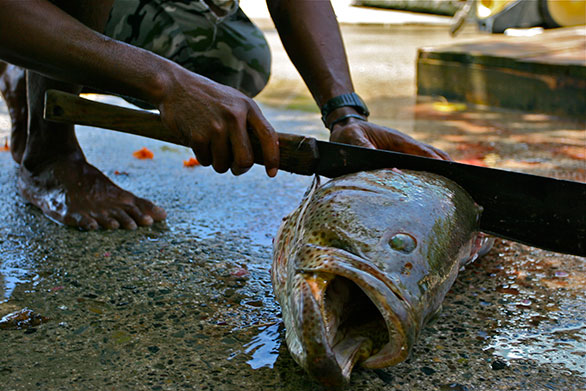
Cleaning a grouper in a Solomon Islands village that also harvests live fish for the aquarium trade.
A Fundamental Shift—Concrete Steps to a More Sustainable Trade
The authors of the paper in Environmental Sustainability not only address the scope of the challenges facing the trade, but they also imagine what a sustainable marine aquarium trade might look like. They layout concrete steps they believe necessary to create a trade capable of having “a constructive and catalytic role in ameliorating poverty and healing natural habitats.” They acknowledge the type of regulatory and monitoring activities necessary to ensure sustainability are, in and of themselves, cost prohibitive—too expensive to be practical—and, as a result, they call for “a fundamental shift in the structure of business practices, incentives and values.”
The fundamental shift envisioned in the paper goes far beyond the “bright spots” frequently touted as the trade’s success stories. While increased aquaculture, in situ mariculture (i.e., occurring in the source country) and better management of small fisheries such as Hawaii’s marine aquarium fishery are no doubt steps in the right direction, what the authors envision in the paper goes far beyond these isolated triumphs. While these often touted success stories are ones demonstrating that of which the trade is capable, the data show the bulk of the trade remains firmly entrenched in sourcing cheap animals from dubious fisheries.
Amongst the concrete tools presented in the paper are a “final export list” (a sort of fluid “white list”), increased monitoring of both export and import data aimed at identifying illegal and unreported trade, better import controls focused on illegal and injurious (e.g., invasive) species, and engagement with reefside communities including a degree of in situ monitoring and adaptive ecosystem-based fishery management. As mentioned earlier, the authors envision a trade that would also be lower volume and higher value.
Not a One-Size-Fits-All Proposition
While this list of proposed tools may seem daunting initially, the authors emphasize that the transition toward a more sustainable trade is not one that will happen over night. They acknowledge the great disparity amongst the relative position of where various aquarium fisheries are on the path to sustainability. The data show, for example, that the smaller developing island nations of the Indo-Pacific—place like Fiji and Solomon Islands—are generally further along in their journey toward sustainability than the trade’s two largest source countries: the Philippines and Indonesia. This fact alone makes a one-size-fits-all approach—the type of approach that would likely be handed down in any sort of sweeping draconian legislative decision—both inappropriate and ineffective.
“In order for the [marine aquarium trade] to be fully sustainable as a whole, each component of the aquarium trade must be sustainable in itself,” the authors contend. “The key is to not treat every species-country combination equally, but to use adaptive learning and management to assess those situations most in need of oversight.” Still, with nearly 2000 species imported to the United States each year from more than 40 countries, the task of identifying the situations most in need of greatest improvement, and then addressing those situations on a country-by-country or even fishery-by-fishery basis, may seem overwhelming—even unattainable.
“Remember,” cautions Rhyne, “we are not saying this all has to happen tomorrow or at the same rate for every fishery, but it needs to happen with the industry towing the weight.” The authors envision, for example, a multi-stakeholder group including industry leaders, as well as scientists and others with a vested interest in a sustainable trade, who would work on these issues and collaboratively implement the necessary tools like the proposed “final export list.” This list, which would be similar to the “white list” recently implemented in Hawaii’s largest marine aquarium fishery, would include species determined by trade in conjunction with data and expertise provided by the scientific community. The list would be fluid, allowing for shifts in aquarists’ interests, technology, market trends, and adaptive management based on data.
The authors emphasize time and again they are not proposing one grand sweeping reform. “We’re talking about small, deliberate steps,” Rhyne say. “One management tool we have suggested is to focus on those target species that make up 85% of the export volume.” They explain that by focusing on a small subset of the total number of species being exported—the ones handled in the highest volume—only around one-quarter of the nearly 2000 species imported annually would likely need to be closely monitored. Nonetheless, the overall impact would be significant.
“If [the industry],” says Rhyne, “would step up and deal with the species that don’t belong and some of the illegal fisheries issues as a group, it would go a long way to fixing many issues.”
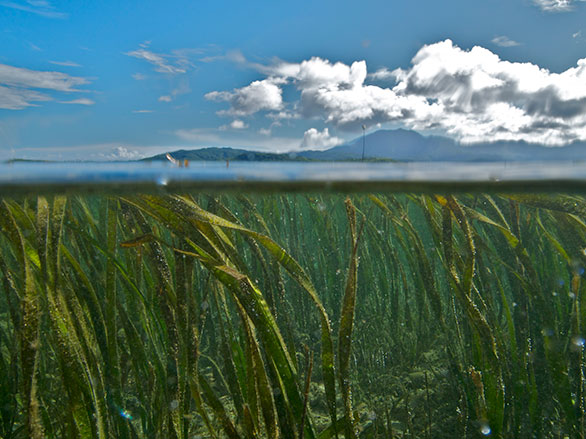
Lagoon near a fishing village where local people determine how fishery resources are used and protected.
Better Communication & Increased Transparency
Just as important as the actual tools proposed in the paper, the authors emphasize the significance of feedback loops. “Because of the need for continual improvement and adaptation,” they say, “there must be feedback loops where net benefits are monitored, failures noted, and appropriate corrective measures taken promptly. It will take effective communication between the harvesters, managers in exporting and importing countries, and markets, all of which need to be integrated across the multitude of species being harvested.”
Many aquarists are often surprised to learn these feedback loops don’t already exist, but the reality is that once an aquarium animal reaches the exporter in a country like Indonesia, the origin of that animal—on what reef it was collected and with what collection technique—is frequently unknown. While this may be less of an issue in a country like Fiji, where destructive fishing practices are rare and where customary resource use rights are the norm, in a country like Indonesia where cyanide use and other destructive fishing practices are commonly employed by roving bands of fishers, a lack of transparency is a very serious issue.
In addition to greater transparency and feedback loops that can correct problems identified by increased monitoring, the authors believe actual assessment or testing should occur at so-called choke points where actions can be optimized. “Trade monitoring should include assessment (and discouragement) of destructive fishing practices, such as the use of cyanide,” the authors write at a point in time when initial trials of a cyanide test are being implemented in conjunction with several public aquariums in Europe.
Conservation Leverage & Transformative Power
At its heart, the Current Opinion in Environmental Sustainability paper suggests what some consider a radical point of view. Not only can aquarium fisheries be sustainable, but also they can be one of the best paths to reef conservation and socio-economic sustainability for in developing coral reef countries.
“It does not take very long for people to forget the quality and value of a healthy coral reef system, and then lose their motivation to be good stewards of it,” conclude the authors of the paper. “Without good local stewardship, there is no hope for coral reefs. And without humans seeing value in coral reefs, there is no hope for good local stewardship.
“The marine aquarium trade is at a level that it can be a quite important component of how people derive value from coral reefs. If we eliminate it, we lose conservation leverage, and the harm done will not matter anyway because the coral reefs of the world will expire. If we focus the marine aquarium trade intelligently, then the resulting conservation leverage will be an important contribution to an overall strategy for pulling coral reefs through the inferno of climate change.
“On this scale, the extraction of animals for the [marine aquarium trade], along with certain other forms of artisanal fishing, are entirely compatible with a full suite of coastal activities that support local livelihoods — ecotourism, agriculture, forestry, and industry — but only if the entire coral reef socio-ecological system is envisioned and stewarded in a sustainable manner.
“The marine aquarium trade may in fact possess a greater transformative power than these other extractive sectors, and is thus in the position to serve as a catalyst. Rather than destroying the reef, the marine aquarium trade could play a role in saving it, a role totally out of proportion to its size, and even out of proportion to its potential to do harm.”
Moving Away from Simplistic Shortsighted Policies
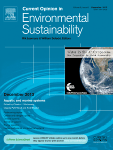
SCIENCE DIRECT, the journal containing the authors’ article on “sustainable exploitation of coral reefs.”
Some industry leaders have envisioned a very different future for the marine aquarium trade than the one outlined in the paper. This alternate future is one in which the industry would entirely disengage from developing island nations and aquarium fisheries in source countries. All animals would be raised in captivity through aquaculture with only periodic wild harvest to maintain healthy broodstock populations. This alternate future worries the authors, as they believe it could actually lead to a less healthy coral reef socio-ecological system.
“Overall,” the authors write, “we suspect that the benefits of a more sustainable [marine aquarium trade] will greatly exceed the risks and costs of ending the trade in marine organisms altogether, or of entirely substituting the in situ wild capture or mariculture at reefside for ex situ aquaculture production.” They worry near-total disengagement would remove essential economic incentive to fish sustainably and conserve while at the same time opening the door to myriad other more damaging impacts. This is one reason why industry giant Petco’s recent commitment to source 100% aquacultured products over any wild-harvested marine species concerns Rhyne, Tlusty and Kaufman so much. “Industry leaders should avoid these simplistic shortsighted policies,” they authors say, “and instead adopt comprehensive sustainability policies that employ market power to help drive reforms that benefit [coral reef socio-ecological system] from the consumption side.”
“The hobby can survive without being attached to the real world or the real people in the source nations for the biodiversity that enlivens home aquaria,” Kaufman says, referring to the type of trade PetCo and others envision. “This, perhaps, is the darkest dimension of the aquarium hobby, and all other biodiversity-based past-times.” He believes a move toward captive propagation and “endless genetic permutation of the seed stock to the hobby” is the current trend, and it worries him. Profoundly and philosophically.

Dr. Les Kaufman: “We can nip the problem in the bud,” says Kaufman, “and divert our trajectory back toward one in which the Earth is green and blue and lush and dripping in the riches of biodiversity as it had before the dawn of the Anthropocene. Since we can have this Earth and our modern comforts together, to actually decide not to, would surely be the real tragedy.”
“This is a logical market development scenario,” he continues, citing Parrot Cichlids and polka-dot Percula Clowns. “For a while there may be an element of shame in having chosen this path—similar to the tiny twinge a few people still feel around the grave situation in the wild for the Flamboyant Tree, the lost Franklinia Tree (Franklinia alatamaha), the Sri Lanka Ruby Barb, the Redline Torpedo Barbs, the Spitz’s Macaw.” The list could go on indefinitely, he says. “But before long, even such twinges will be lost. We will become the Earth of Asimov’s Foundation—except totally bereft of the glorious cross-galactic cultural stimulation that he envisioned. Our lives will be simply impoverished, and an ignorant impoverishment at that.”
Or there is the alternative—the one envisioned in the paper. It is one in which a robust and sustainable marine aquarium trade relies on a combination of source country mariculture, aquaculture in both source and market countries, and wild harvest from well-managed fisheries where both ecosystems and fisher communities benefit.
“We can nip the problem in the bud,” says Kaufman, “and divert our trajectory back toward one in which the Earth is green and blue and lush and dripping in the riches of biodiversity as it had before the dawn of the Anthropocene. Since we can have this Earth and our modern comforts together, to actually decide not to, would surely be the real tragedy.”
SOURCES
Is sustainable exploitation of coral reefs possible? A view from the standpoint of the marine aquarium trade
Andrew L Rhyne1,2, Michael F Tlusty1,3 and Les Kaufman1,4,5
Current Opinion in Environmental Sustainability 2014, 7:101–107 This review comes from a themed issue on Aquatic and marine systems 2014 Edited by Georgios Tsounis and Bernhard Riegl Received 22 July 2013; Accepted 10 December 2013 1877-3435/$ – see front matter, # 2013 Elsevier B.V. All rights reserved. http://dx.doi.org/10.1016/j.cosust.2013.12.001
ABSTRACT Coral reefs are at the brink of a global, system-wide collapse. Human populations living at the water’s edge are a vital key to the long-term survival and maintenance of these global biodiversity hotpots. Global trade combined with high levels of poverty threatens to siphon out biodiversity riches from developing nations to the developed world for short-term gains. The difficult challenge for local governance, conservationists, and resource managers alike is to create and maintain as diverse and well-functioning a Coral Reef Socio-Ecological System (CRSES) as possible. A fundamental shift in the structure of business practices, incentives and values are needed to move the marine aquarium trade to a more sustainable state. Rapid growth in the cultured coral trade and better fishery management in small fisheries are bright spots in the marine aquarium trade, and demonstrate that this trade can be part of a broader solution to reef conservation. Addresses 1New England Aquarium, John H. Prescott Marine Laboratory, Boston, MA, USA 2 Roger Williams University, Department of Biology and Marine Biology, Bristol, RI, USA 3 University of Massachusetts at Boston, School for the Environment, Boston, MA, USA 4 Boston University Marine Program, Department of Biology, Boston University, Boston, MA, USA 5 Betty and Gordon Moore Center for Ecosystem Science and Economics, Conservation International, Arlington, VA, USA
About the Author
Ret Talbot is a senior editor of CORAL Magazine and a photojournalist who writes frequently about sustainable fisheries. He is a co-author of the recently published Banggai Cardinalfish, official publication of the Banggai Rescue Project (Reef to Rainforest, 2013).
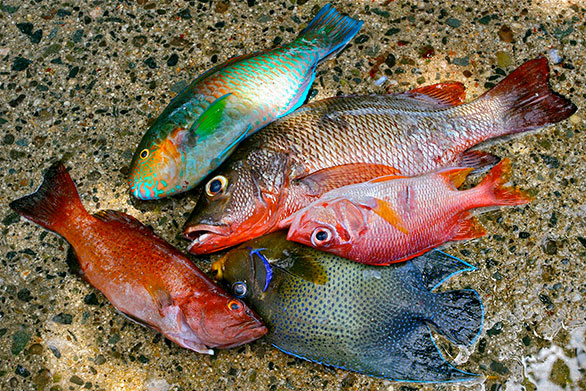
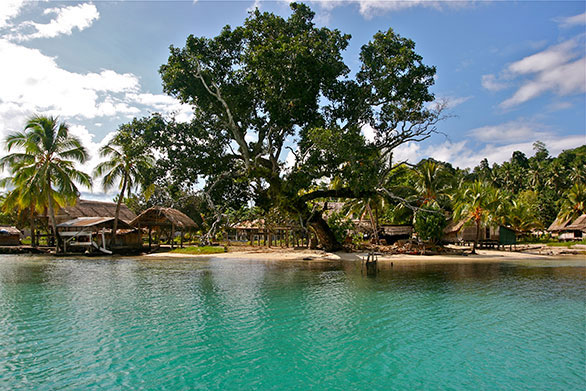
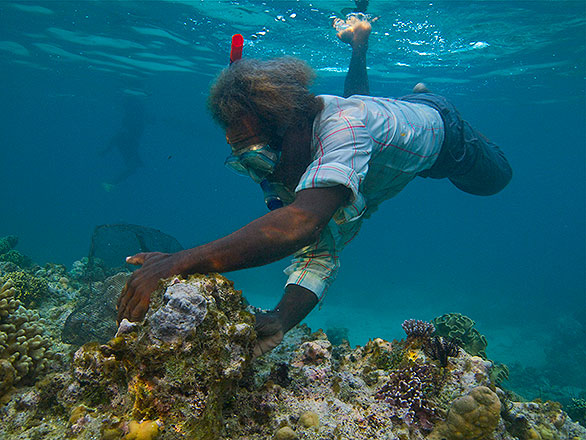

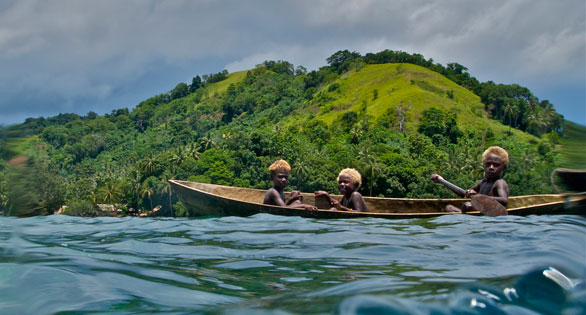





Having help to found the International Marinelife Alliance (IMA), I was heavily involved in the issues discussed since 1985.While, I applaud the sentiments expressed by Dr. Rhyne and his co-authors, there do not appear to be easy solutions to cyanide fishing for aquarium fish and live reef fish.Many of the ideas discussed were developed and implemented by the IMA such as net trainings, hook and line trainings, cyanide testing, coral farming etc. But, the reality is that the funding has dried up, aquarists are not aware and don’t care, the trade itself is inflexible, and governments such as the Philippines, Indonesia, and the USA have failed to enforce existing laws. Large NGOs could do more but are more concerned about lining their pockets than doing village-based trainings. A new test for thiocyanate has been developed that could allow more testing to support management. But, as I said I don’t believe that the will exists to do what the authors of this paper are advocating. I regret to say this, but believe it to be the case.
Dr. Peter J. Rubec